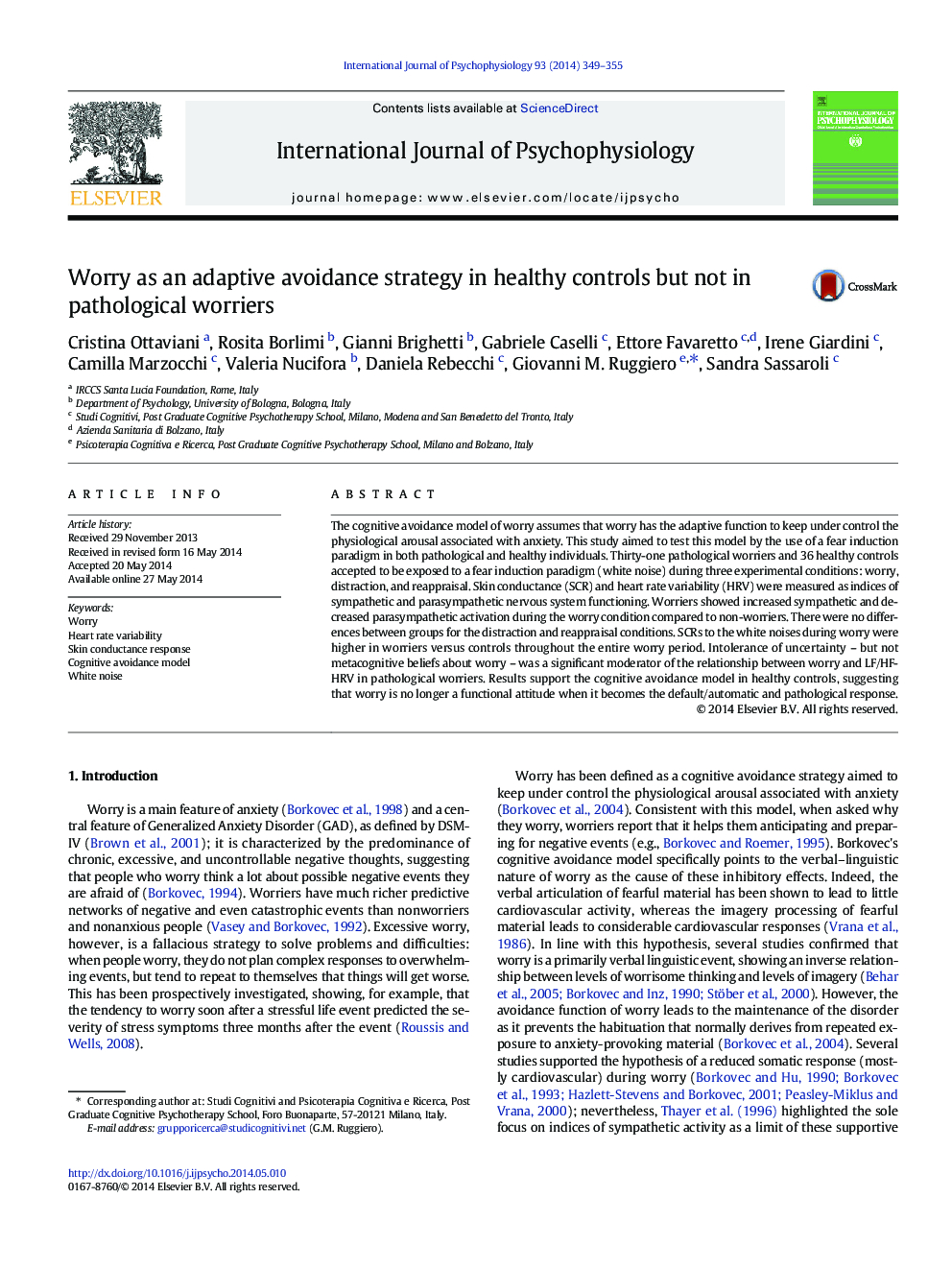| کد مقاله | کد نشریه | سال انتشار | مقاله انگلیسی | نسخه تمام متن |
|---|---|---|---|---|
| 930254 | 1474415 | 2014 | 7 صفحه PDF | دانلود رایگان |
• Higher sympa- and lower parasympathetic responses to fear during worry in worriers
• Reappraisal was associated with the lowest sympathetic response to fear.
• Intolerance of uncertainty was a moderator of these relationships in worriers.
The cognitive avoidance model of worry assumes that worry has the adaptive function to keep under control the physiological arousal associated with anxiety. This study aimed to test this model by the use of a fear induction paradigm in both pathological and healthy individuals. Thirty-one pathological worriers and 36 healthy controls accepted to be exposed to a fear induction paradigm (white noise) during three experimental conditions: worry, distraction, and reappraisal. Skin conductance (SCR) and heart rate variability (HRV) were measured as indices of sympathetic and parasympathetic nervous system functioning. Worriers showed increased sympathetic and decreased parasympathetic activation during the worry condition compared to non-worriers. There were no differences between groups for the distraction and reappraisal conditions. SCRs to the white noises during worry were higher in worriers versus controls throughout the entire worry period. Intolerance of uncertainty – but not metacognitive beliefs about worry – was a significant moderator of the relationship between worry and LF/HF-HRV in pathological worriers. Results support the cognitive avoidance model in healthy controls, suggesting that worry is no longer a functional attitude when it becomes the default/automatic and pathological response.
Journal: International Journal of Psychophysiology - Volume 93, Issue 3, September 2014, Pages 349–355
